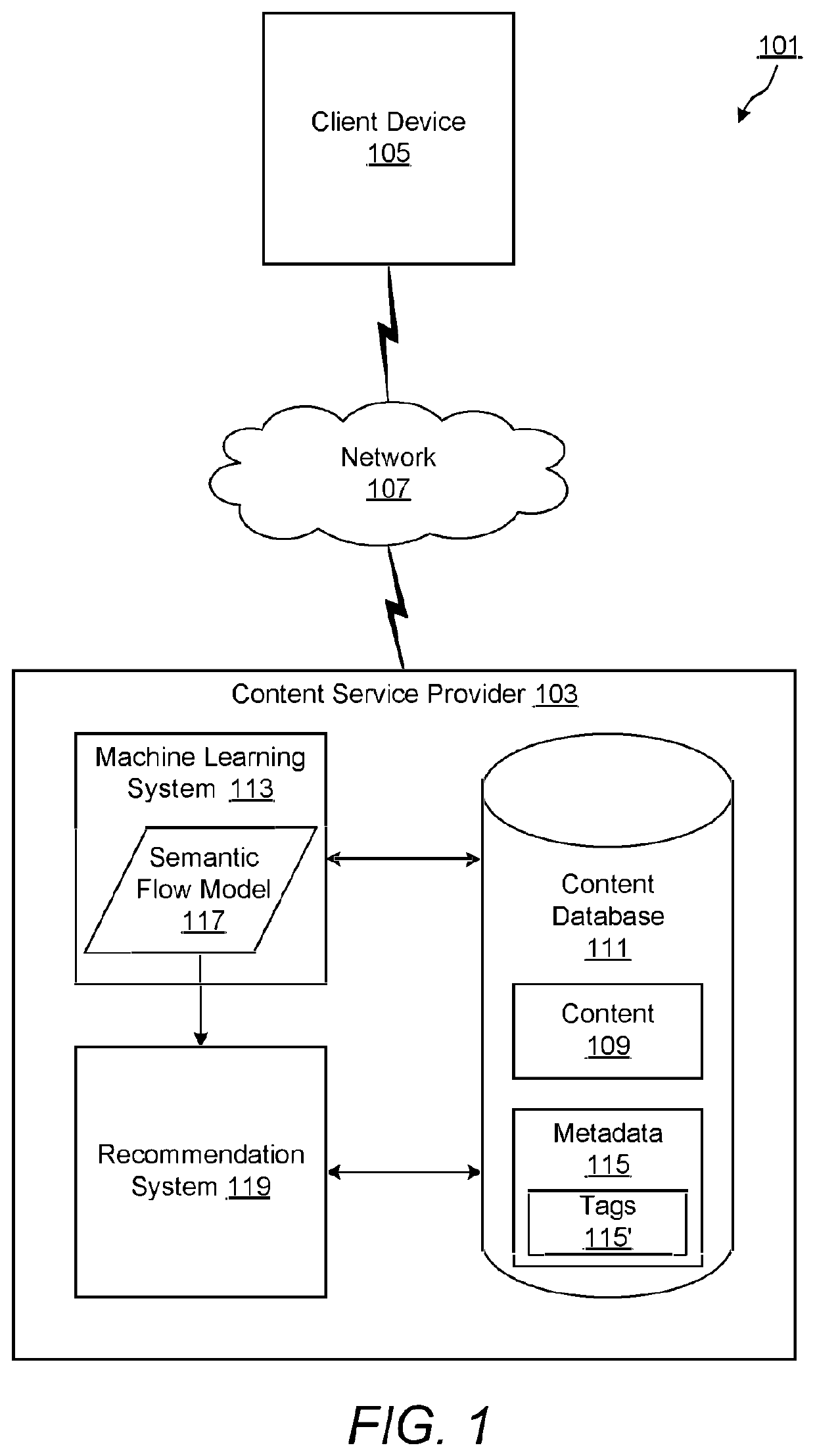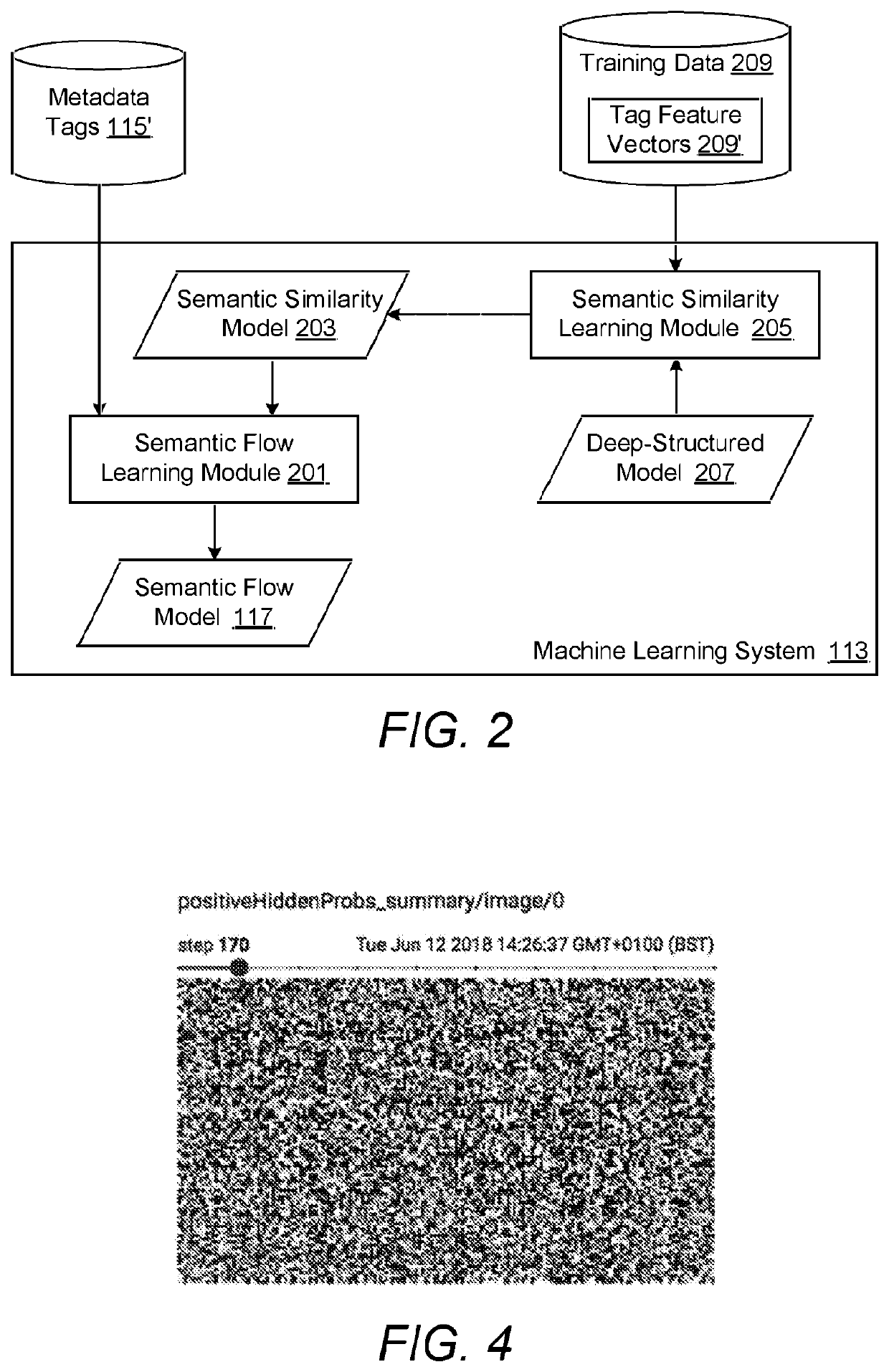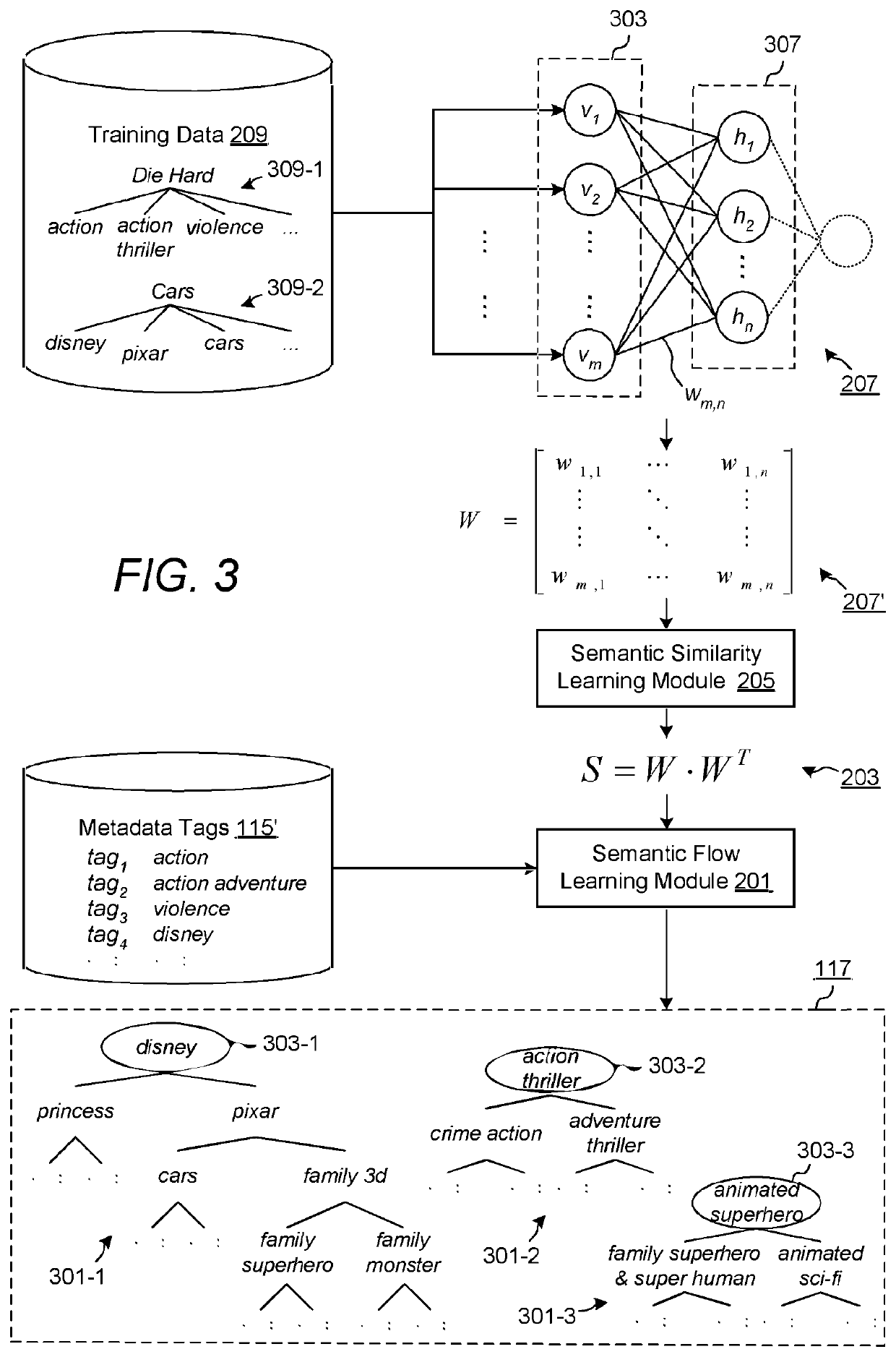System and method for improved content discovery
a content discovery and content technology, applied in the field of media systems, can solve the problems of narrow, constricted and/or inflexible recommendation scope, and achieve the effect of increasing the relevancy level of recommendations
- Summary
- Abstract
- Description
- Claims
- Application Information
AI Technical Summary
Benefits of technology
Problems solved by technology
Method used
Image
Examples
Embodiment Construction
[0023]Specific embodiments of the invention will now be described, directed to a computer-implemented system for discovering content, such as movies, television episodes, songs, podcasts, e-books, video games, software applications, and the like. The system uses machine learning technology to learn semantic affinities among a corpus of unique metadata tags associated with content in a database, and to train a semantic flow data model for use in addressing a problem of providing improved retrieval coverage of likely associated content when resolving queries for recommended content.
[0024]FIG. 1 shows schematically the main components of an exemplary content discovery environment 101 that is operable to employ embodiments of the present invention. The illustrated environment 101 includes a content service provider 103 in data communication with a client device 105 via a data network 107. The content service provider 103 may be implemented as one or more servers providing one or more ne...
PUM
 Login to View More
Login to View More Abstract
Description
Claims
Application Information
 Login to View More
Login to View More - R&D
- Intellectual Property
- Life Sciences
- Materials
- Tech Scout
- Unparalleled Data Quality
- Higher Quality Content
- 60% Fewer Hallucinations
Browse by: Latest US Patents, China's latest patents, Technical Efficacy Thesaurus, Application Domain, Technology Topic, Popular Technical Reports.
© 2025 PatSnap. All rights reserved.Legal|Privacy policy|Modern Slavery Act Transparency Statement|Sitemap|About US| Contact US: help@patsnap.com



